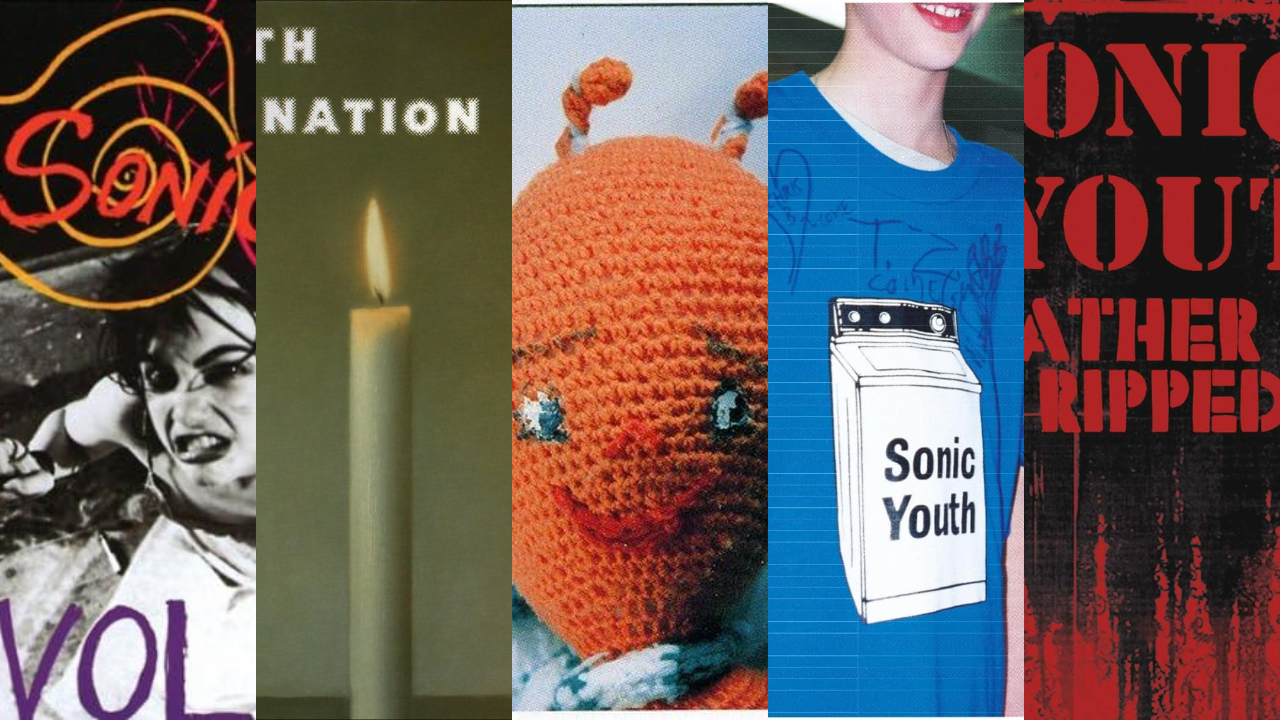There cannot be many more influential and revered bands in the history of underground guitar music than New York collective Sonic Youth. From their formation in 1981, through to their disbandment 30 years later, the classic line up of bassist/vocalist Kim Gordon, guitarist/vocalists Thurston Moore and Lee Ranaldo, and drummer Steve Shelley explored such vast, expansive, unique sonic terrains that trying to pigeonhole Sonic Youth into one singular genre is impossible.
Starting life as a number of the No Wave bands, who delighted in creating atonal, pain-inducing noise, Sonic Youth evolved from post-punk to indie rock to major label, chart-botherers, and became an inspiration to the entire grunge and alternative rock scenes. Deliberately shifting far away from the mainstream and back to experimental, deeply challenging art rock, their three-decade musical journey was a fascinatingly wild ride.
With fifteen full-length albums to their name, knowing exactly where to start with Sonic Youth is a daunting task, so here we present five albums to steer you through one of modern rock's most essential back catalogues.

Evol (1986)
The band’s third full length album, but crucially the first to feature Steve Shelley on drums, marking the formation of the classic line up, Evol feels like the first Sonic Youth album to be easily identified as the Sonic Youth sound. Comfortably the most melodic that the band had sounded to this point, the likes of Shadow of Doubt shimmer with post-punk drama, making the chaotic wall of noise sounds that they had previously explored seem even more threatening on a song like Death to Our Friends or the nightmarish Marilyn Moore. From here they would mine both ideas further, but Evol feels like an essential evolutionary step.
Daydream Nation (1988)
A landmark release for US underground guitar music, and one of the most critically adored albums in history, 35 years after its release Daydream Nation still sounds remarkable.
Painstakingly created after long, endless months of improvisation and band jam sessions, Daydream Nation captures Sonic Youth at the peak of their powers, able to seamlessly flit between gorgeous, lifting melodic indie rock, chaotic, noisy art-punk and avant garde, sonic experimentations. So radical was the album that it soon became the go-to influence for an entire generation of grunge and alternative rock artists, and when that style invaded the mainstream a few years down the line, Nirvana, Mudhoney and the rest were quick to point to it as a kind of year zero for the movement. Alongside its cultural importance, it's the creative high point of Sonic Youth’s career.
Dirty (1992)
After the success of Daydream Nation, Sonic Youth were courted by the major label world, ultimately signing a deal with Geffen Records. Their first major label release, 1990’s Goo, was excellent, but it was a couple of years later, when the zeitgeist had completely shifted to fit their entire aesthetic, that they truly became a mainstream concern. Dirty is unquestionably their most easily digestible album, with the band embracing Butch Vig's production and - whisper it - proper pop-rock hooks across its hour run time. It gave the band a genuine crossover hit with Sugar Kane, and nearly turned Sonic Youth into actual rock stars.
Washing Machine (1995)
Although Sonic Youth were still a major label act going into 1995, they absolutely did not conform to the idea of mainstream corporate rock. Most bands would be hungry to replicate the success of Dirty, but Sonic Youth retreated back toward their nosiest and most abrasive sounds. 1994’s Experimental Jet Set, Trash and No Star was certainly more lo-fi than Dirty, but it was Washing Machine a year later that proved they had absolutely no intention of embracing the MTV generation. Far more angular, often tuneless and atonal, and featuring some of the band's lengthiest songs, it sounds like rejection of their mainstream status by design. Which isn't to say it isn’t a great album: closing track The Diamond Sea is a patience-testing 19 minutes-plus yet remains one of their most essential songs.
Rather Ripped (2006)
Sonic Youth’s 14th, and penultimate, studio album marked another shift in style. When multi-instrumentalist Jim O’Rourke joined the band as a fifth member in 1999, it seemed to accelerate their desire to release explorative, experimental and rather difficult albums. 2004’s Sonic Nurse was his final effort with the band before his 2005 exit, meaning Sonic Youth was once again restored to its classic line up. This seemed to inspire them to make a more instantaneous, and more easily palatable album in Rather Ripped. Once again, with the rise of The Strokes and the garage rock revival, you could argue Sonic Youth had found themselves an unlikely but very welcome part of the zeitgeist. Still relevant, still challenging, still influential after all these years, it was a testament to their staying power.

